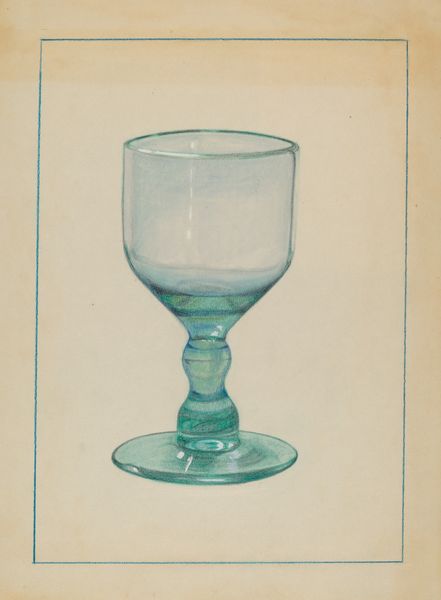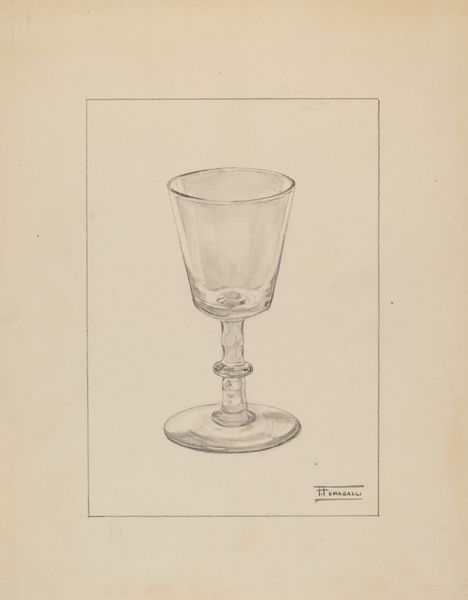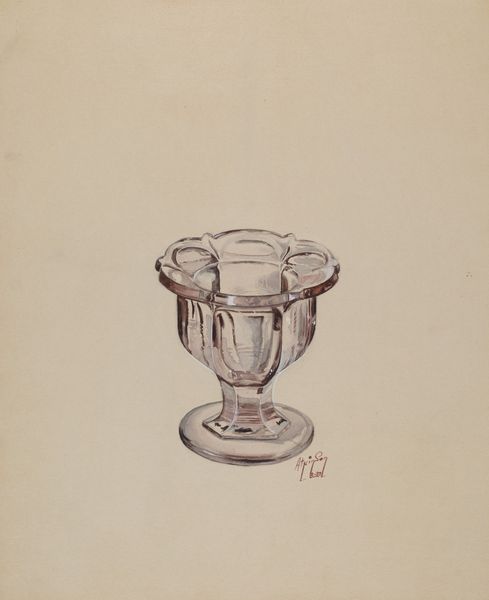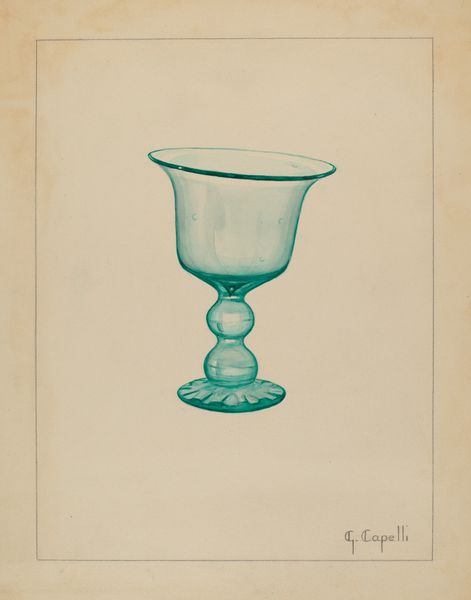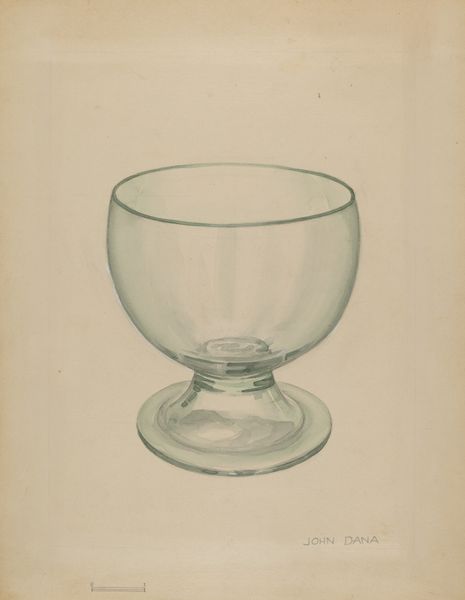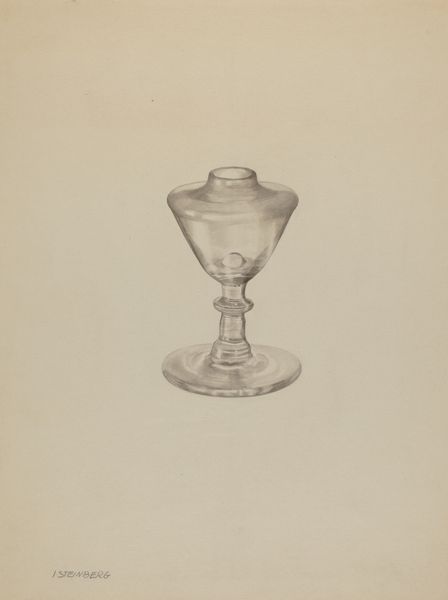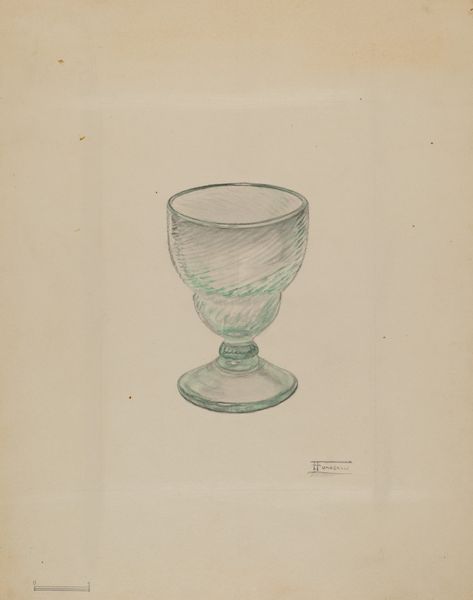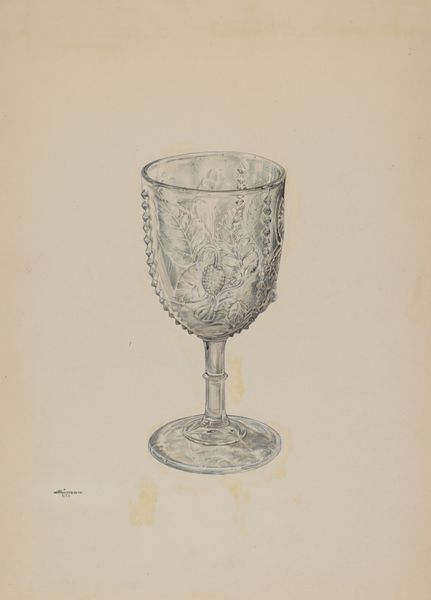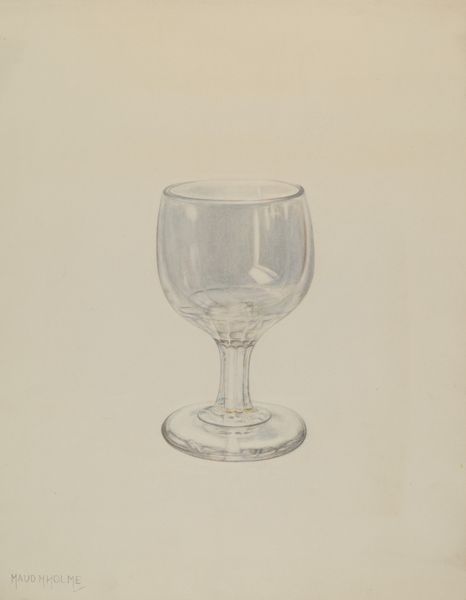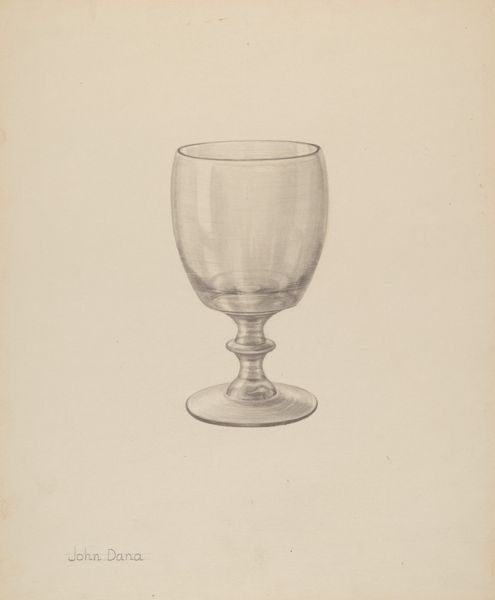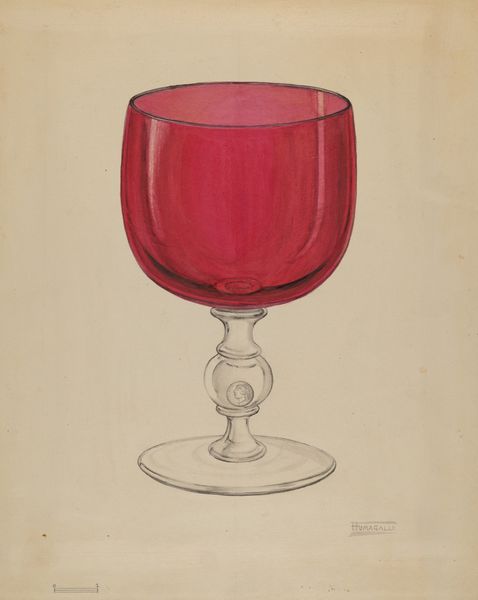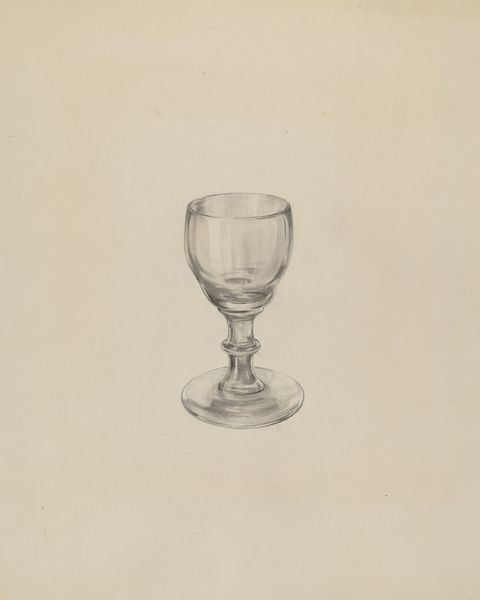
drawing, watercolor
#
drawing
#
watercolor
#
watercolour illustration
#
academic-art
#
watercolor
Dimensions: overall: 28.8 x 23.1 cm (11 5/16 x 9 1/8 in.)
Copyright: National Gallery of Art: CC0 1.0
Curator: What a delicate watercolor, a "Goblet" dating back to approximately 1936, rendered by Frank Fumagalli. It captures an everyday object with unexpected grace. What strikes you about it initially? Editor: There's an appealing, almost nostalgic quality to its simplicity and the rendering of glass. The artist’s hand is really visible here in the layering and building up of the watercolor washes. Curator: Precisely! The choice to portray a goblet, divorced from context, raises interesting questions. Was this purely an exercise in form, or did Fumagalli intend to elevate a functional object, to give it…presence? There are theories around domestic space being perceived as gendered—the goblet then may relate to wider notions about the labor of care within the domestic sphere? Editor: I see it more as a study of material properties, really. Look at the careful handling of light reflecting and refracting through the glass. I mean, it’s craft, design, and high art all blurred into one single, precious artifact. What interests me is the labour involved in rendering such a translucent material through opaque medium. Curator: I agree that the execution is meticulous. But is it just that? This was during the interwar years, a time of incredible social and political tension. Is the goblet then a quiet statement, reflecting domestic concerns during upheaval? It raises a consideration of labour too, as mass-produced design was beginning to make more affordable pieces of glassware commonplace, perhaps implying Fumagalli's middle class sensibility? Editor: Perhaps. It does raise questions about how objects were perceived then, particularly items of luxury and what kind of aspiration or societal mobility owning them represented. Its appeal as a motif is timeless too; people would encounter glasses just like this every single day. Curator: Thinking about class allows us to understand objects as symbols. This piece compels us to reconsider those very symbols – not just what they mean, but what burdens or aspirations they reflect. Editor: Absolutely. Examining Fumagalli's approach and materials grants such a palpable understanding of interwar-era life through these objects, and the material’s delicate fragility is also so expressive. Curator: So true, thank you! Editor: And thank you!
Comments
No comments
Be the first to comment and join the conversation on the ultimate creative platform.
